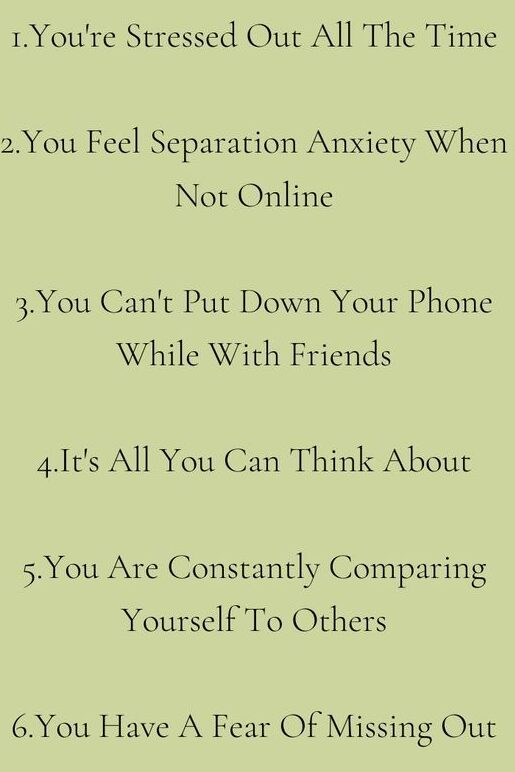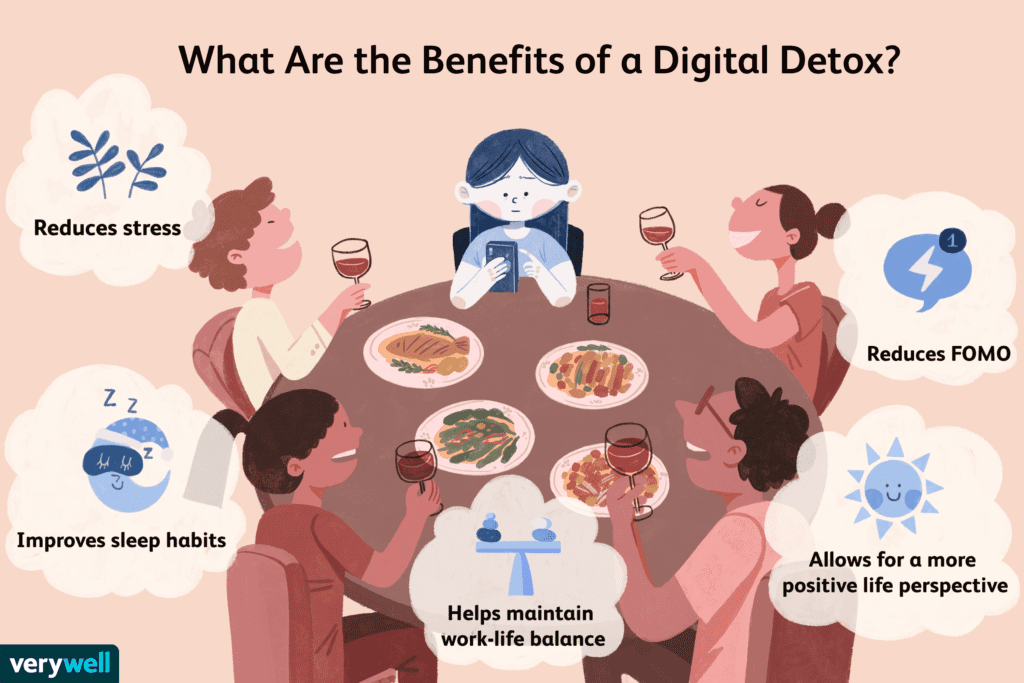Digital Detox is the conscious process of reducing screen time and reconnecting with the physical world to achieve a healthier lifestyle. With the growing reliance on technology, balancing online and offline lives has become critical for mental health and productivity. Here’s a guide to achieving that balance.


Why You Need a Digital Detox
Technology offers convenience but can lead to:
- Mental Health Issues: Excessive screen time is linked to anxiety, stress, and sleep disorders.
- Reduced Productivity: Frequent notifications and distractions interrupt focus and workflow.
- Social Disconnect: Overuse of digital tools can weaken in-person relationships.
Steps to Start Your Digital Detox
1. Assess Your Screen Time
Use tools like Screen Time (iOS), Digital Wellbeing (Android), or apps like RescueTime to monitor your daily tech usage.
| Platform | How It Helps |
|---|---|
| Screen Time | Tracks time spent on apps and allows time limits. |
| RescueTime | Provides detailed insights into productive and unproductive activities. |
| Freedom App | Blocks distracting apps and websites. |
2. Set Clear Goals
Identify specific objectives, like reducing social media use or avoiding devices during meals.
3. Designate Tech-Free Zones
Establish areas like the bedroom or dining room as no-device zones to encourage in-person interactions.
4. Limit Notifications
Turn off non-essential notifications to minimize distractions. Focus on tools that allow “Do Not Disturb” modes or app-specific notifications.
5. Adopt Scheduled Breaks
Incorporate breaks using techniques like the Pomodoro method to step away from screens at regular intervals.


Digital Detox Strategies for Work-Life Balance
- Create a Routine
Set specific hours for checking emails or work-related tasks. Avoid overextending online availability.
2. Practice Mindfulness
Use mindfulness apps like Calm or Headspace to cultivate awareness and reduce dependence on devices.
3. Schedule Offline Activities
Prioritize hobbies, exercise, or social outings to fill time previously spent on screens.
4. Leverage Technology for Good
If technology is unavoidable, focus on apps that promote self-improvement, such as learning platforms or fitness trackers.


Tips for Maintaining Balance
- Start Small
Begin by reducing usage by 30 minutes a day and gradually increase offline time. - Use the 20-20-20 Rule
Every 20 minutes, look at something 20 feet away for 20 seconds to prevent eye strain. - Communicate Your Plan
Inform friends, family, and coworkers about your detox to manage expectations around availability. - Replace Digital Activities
Swap scrolling with journaling, reading, or outdoor activities. - Reward Yourself
Celebrate milestones like a full tech-free weekend by treating yourself to a relaxing activity.
Social Media Detox and Families
A family-focused detox can strengthen relationships:
- Host Tech-Free Nights: Dedicate evenings to board games or movie nights without devices.
- Lead by Example: Children emulate adult behavior; set a good precedent.
- Use Parental Controls: Manage children’s screen time using tools like Google Family Link or Apple Screen Time.
Related articles:
- AI travel planner – the best way to save your time and money
- What is generative AI and how does it work?
- What is meta AI and the challenges behind it?
- Jobs That AI Can’t Replace: The Essential Human Skills for the Future
- What Jobs Will AI Replace by 2030?
- Future of Electric Vehicles: What to Expect by 2030
- The Benefits of Virtual Reality Beyond Gaming
- The Best Online Platforms for Upskilling in 2025
Sources:










